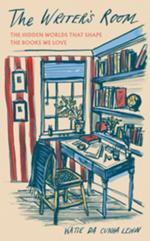What is it that so fascinates us about the spaces where writers work? Why does a remote cabin, ramshackle shed or library garret, strewn with papers and piled with books, so capture our imagination? The rooms of certain writers are mythologized almost as much as the works themselves: Virginia Woolf’s garden room at Monks House; the Brontë’s study at Haworth; Sigmund Freud’s study, with its famous couch. They are preserved in writers’ houses or recreated in museums, pictured and described in newspaper columns and on Instagram, seemingly standing in for the labour of writing itself. And yet writers, old and new, have worked in all kinds of places and circumstances: in hotels, bedsits and boarding houses, at libraries and while on the move. From Proust’s bedroom to Joan Didion’s portable typewriter, Maya Angelou’s hotel rooms to Ernest Hemingway in Parisian cafés and Michaela Coel’s Arabella with post-it notes in her rented room, Katie da Cunha Lewin dismantles the familiar furniture of the writer’s room and opens it up. Blending cultural critique with the personal and historical, Katie da Cunha Lewin takes us on a fascinating journey through the hidden worlds that shape the books we love.

The writer’s room
ISBN: 9781783969098
Format: Hardback
Publisher: Elliott & Thompson (HEDS)
Origin: GB
Release Date: December, 2025
154793

